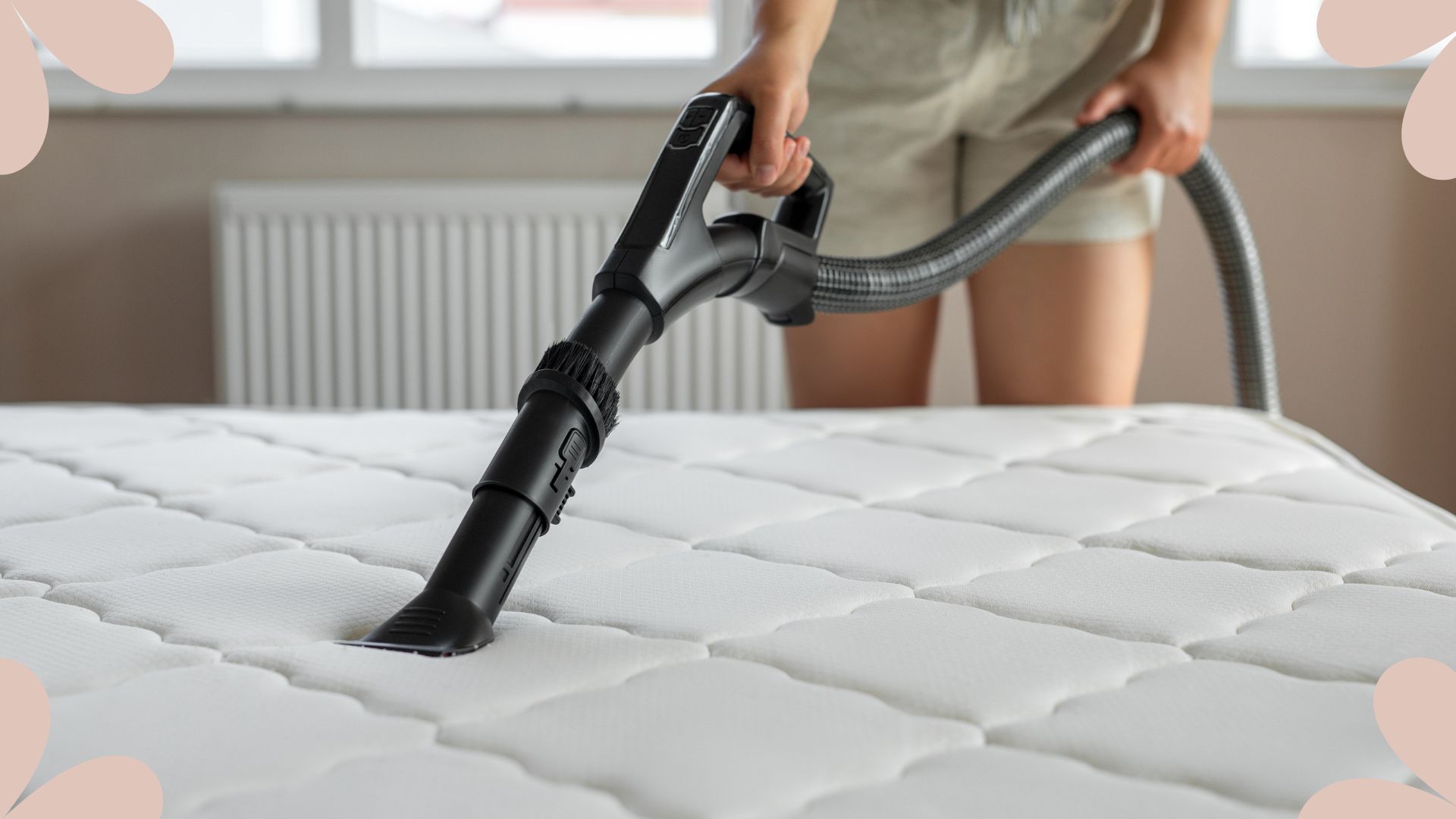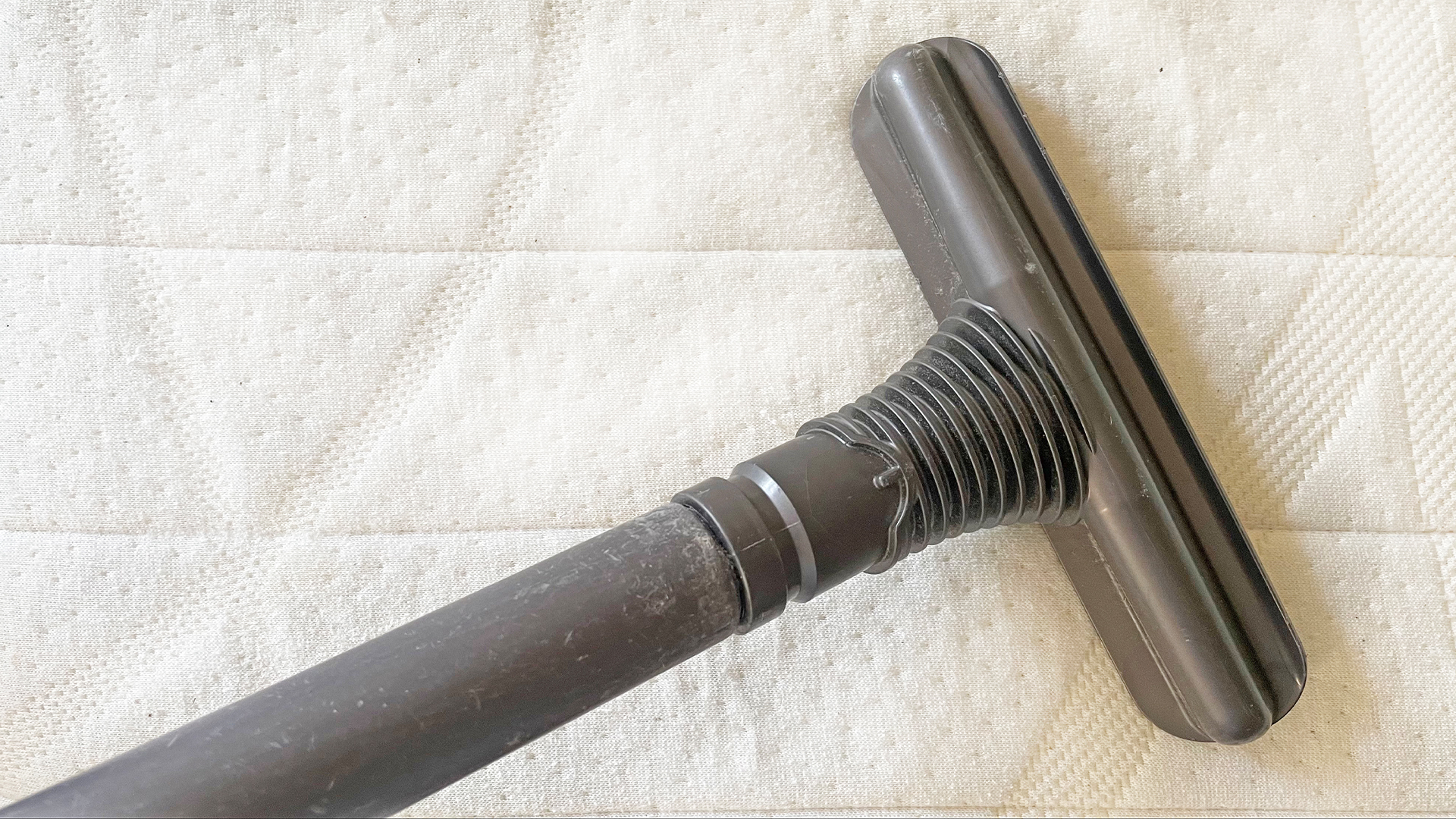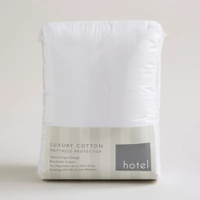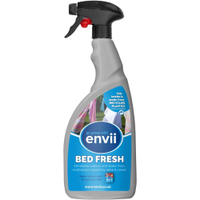Should you vacuum your mattress? The key dos and don'ts to protect your health and your sleep surface
There's debate around whether you should vacuum a mattress or whether it causes damage. We spoke to mattress experts to find out the pros and cons


You might think that you should be regularly vacuuming your mattress – and why not? They are after all known to harbour dust mites, dead skin and, ahem, pet hair.
Vacuuming is a key part of cleaning a mattress, which is key to prolonging its lifespan. But some vacuuming techniques are unsafe for your mattress and could even damage it, say experts.
We've spoken to a professional cleaner and a mattress expert to discover how to vacuum a mattress safely, how often to do it, and when not to do it at all.
Can you vacuum a mattress?
You may well have invested in one of the best cooling mattresses money can buy, in which case, you'll want to ensure its lifespan is as long as possible.
Chris Tattersall, sleep expert and MD of Woolroom says, "Should your mattress be made of synthetic, man-made fibres, such as memory foam, then you are okay to clean it with a vacuum, as it is generally safe to do so. These mattresses do need more cleaning, as they harbour house dust mites and other allergens that disrupt your sleep."
He does, however, explain that mattresses made of natural fillings such as wool should never be vacuumed. He says: "Doing so would displace the natural fillings in the mattress, as even a gentle suction can disturb the way these have been placed beneath the surface, causing them to be dislodged, leading to lumps being created in the mattress or even pulling the fibres through the fabric of the mattress."
Instead of vacuuming naturally filled mattresses, Chris recommends using a soft brush as this won't disturb the filling. You can do this every few weeks to sweep away the dust, though if have a wool-filled mattress this won't be needed at all.
Sign up for the woman&home newsletter
Sign up to our free daily email for the latest royal and entertainment news, interesting opinion, expert advice on styling and beauty trends, and no-nonsense guides to the health and wellness questions you want answered.
"With a wool mattress, there is no real need to clean it, as due to wool’s unique natural self-cleaning properties, the fibre is resistant to house dust mites and other allergens, meaning there isn’t much to clean away," says Chris.
How often should you vacuum your mattress?
If you have a synthetic mattress then you're free to vacuum every time you change your bed, especially, as Dawnn Hilton-Lito, general manager at commercial cleaning company One Less Thing explains, if you have allergies: "Regular mattress vacuuming is recommended if you or your partner are particularly sensitive to dust and other allergens lurking on and around it."
Mattresses can hold lots of aggravating dust particles, skin cells and dust mites which banded together can cause serious irritation to your skin, especially if you share your bed with a pet.
"Vacuuming is one of the quickest and most efficient methods to get rid of dog and cat hairs, which makes the process ideal for pet owners who let their furry friends sleep on the bed with them," says Dawnn.

Dawnn founded her own domestic and commercial cleaning business in the UK after moving from the States, she eventually went on to also open a carpet and upholstery cleaning service to the mix. She is now the general manager of One Less Thing, which is a domestic cleaning company, where she runs the cleaning team and trains new members.

No pets, no allergies? "You should aim to vacuum a synthetic mattress at least once every three to six months, although you may want to do it more frequently for optimal results," continues Dawnn.
However, if you have a high-quality mattress protector, then the necessity of cleaning your mattress significantly decreases, even if you do have a pet. It will also protect your mattress from spills, sweat and the resulting odours.
"A strong mattress protector reduces the need for frequent vacuuming, as the protector can be washed separately," says Dawnn.
Should your mattress be made of natural filling this makes a mattress protector all the more important, so that you can rely on gentler cleaning methods, and use them less frequently, prioritising spot cleaning stains and brushing over vacuuming. Our top pick is below.
Hotel Luxury Cotton Mattress Protector: £20 at Dunelm
A good quality mattress protector is a must: not only will it cut down the vacuuming needed, it will protect your mattress from spills, too. This one from Dunelm will offer protection and can be easily machine-washed.
Top tips for vacuuming a mattress
If you are vacuuming a synthetic mattress, this is the best approach.
- You can use your regular vacuum cleaner when vacuuming your mattress however make sure you add on the upholstery tool or a soft brush attachment so the fabric of your mattress is protected from any unnecessary damage.
- If you have one of the best cordless vacuums, especially a handheld one, then make use of this when vacuuming your mattress. It will make the whole task a lot easier and will allow you to get into the seams and corners.
- Dawnn also suggests using the most gentle setting on your vacuum first and then only increasing the power depending on how well the vacuuming is suctioning up the follicles.
- It's always best to start any vacuuming job by cleaning out the filter and ensuring your vacuum bin is empty. For extra cleanliness, check your vacuum's attachments for any leftover hair or dirt from a previous cleaning job.
- Another great way to ensure lasting freshness is to clean your mattress with baking soda. Sprinkle a generous amount of baking soda over your mattress, especially on any stain and leave it there for around an hour. Then simply vacuum all the powder up to leave you with a clean and fresh-smelling mattress.
- Finally, if you're looking for an easier, mess-free way of refreshing your mattress with minimal vacuuming then we'd recommend picking up a sprayable mattress refresher, like this one below from Amazon; it has all-natural ingredients and can help with stubborn stains too, a win-win!
Envvi Bed Fresh - Natural Mattress Refresher: £9.99 at Amazon
This bed refresher uses only friendly, pro-biotic bacteria to remove any stains and or smells from your bedding and mattress. The light fragrance will leave your mattress smelling fresher and looking cleaner.
Does vacuuming a mattress get rid of dust mites?
Whilst vacuuming will certainly get rid of most debris, dirt and dust there's no guarantee it will eliminate all traces of dust mites. One way to banish bed mites and bacteria for good though is to flip your mattress every one to three months as this will stop any bacteria from collecting. Should, however, you not have a double-sided mattress, we suggest regular vacuuming, a mattress protector and knowing how to clean your mattress properly to give it the best chance of staying dust mite-free.
Now you know that vacuuming is a great expert cleaning hack if you have a synthetically filled mattress. And if you're still after some more expert tips the owner of Gtech and inventor of the cordless vacuum, Nick Grey shares his advice for achieving the best clean with a vacuum. He says, "Work in lines going up and down the mattress, and round the sides. Also, make sure to concentrate on the studded areas where dust tends to settle and collect the most."

Emily joined woman&home as a staff writer after finishing her MA in Magazine Journalism from City University in 2023. After writing various health and news content, she now specialises in lifestyle, covering unique cleaning hacks, gardening how-tos, and everything to help your houseplants thrive.
-
 Where was Black Snow season 2 filmed and is it based on a true story?
Where was Black Snow season 2 filmed and is it based on a true story?Black Snow season 2 has landed on BBC iPlayer and the picturesque scenery is a stark contrast against the drama's chilling events.
By Emma Shacklock Published
-
 We thought Michelle Monaghan looked incredible in The White Lotus, now her makeup artist has finally told us why
We thought Michelle Monaghan looked incredible in The White Lotus, now her makeup artist has finally told us whyThat finale left us with so many questions - and they're mostly about Michelle Monaghan's fresh complexion...
By Naomi Jamieson Published

